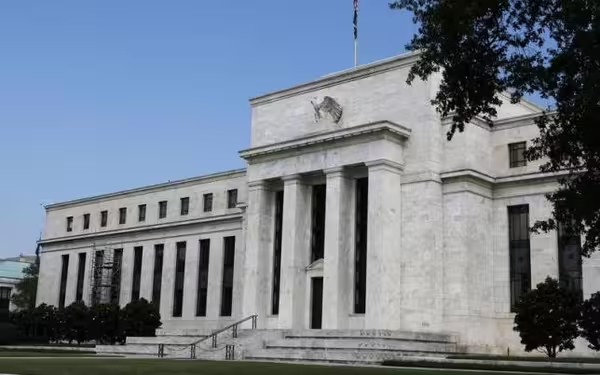Saturday, November 16, 2024 05:33 PM
US Federal Reserve Cuts Interest Rates by 25 Basis Points
- Federal Reserve cuts rates by 25 basis points.
- Job market shows signs of easing.
- New interest rate range is 4.50% to 4.75%.
 Image Credits: tribune.com.pk
Image Credits: tribune.com.pkThe US Federal Reserve cuts interest rates by 25 basis points to support economic growth and manage inflation amid easing job market conditions.
The US Federal Reserve, the central bank of the United States, has made a significant decision by cutting interest rates by 25 basis points, or a quarter of a percentage point. This move, which was widely anticipated by economists and market analysts, reflects the Fed's response to the current economic landscape. Policymakers have observed that the job market has "generally eased," indicating a shift in employment dynamics, while inflation is gradually moving towards the central bank's target of 2%.
During a two-day policy meeting, the Federal Open Market Committee (FOMC) concluded that economic activity in the country has continued to expand at a solid pace. This is a positive sign, suggesting that while there are challenges, the overall economy remains resilient. The new benchmark overnight interest rate now stands at a range of 4.50% to 4.75%. This adjustment is aimed at fostering economic growth and ensuring that inflation remains under control.
Interest rates play a crucial role in the economy. When the Fed lowers rates, it becomes cheaper for individuals and businesses to borrow money. This can lead to increased spending and investment, which in turn can stimulate economic growth. However, the Fed must balance this with the need to keep inflation in check. The current rate cut is a strategic move to support the economy while keeping an eye on inflation trends.
As we look ahead, it is essential to consider the implications of this rate cut. For consumers, lower interest rates may mean more affordable loans for homes, cars, and education. For businesses, it could lead to increased investment opportunities. However, it is also important to remain cautious, as the easing job market could signal potential challenges ahead.
The US Federal Reserve's decision to cut interest rates is a significant step in navigating the complexities of the current economic environment. While it aims to support growth and manage inflation, the effects of this decision will unfold over time. As individuals and businesses adjust to these changes, staying informed and prepared will be key to making the most of the evolving economic landscape.













